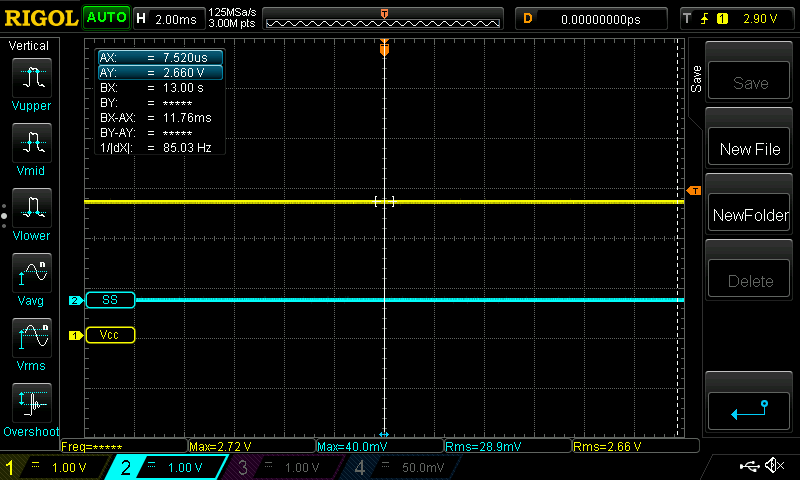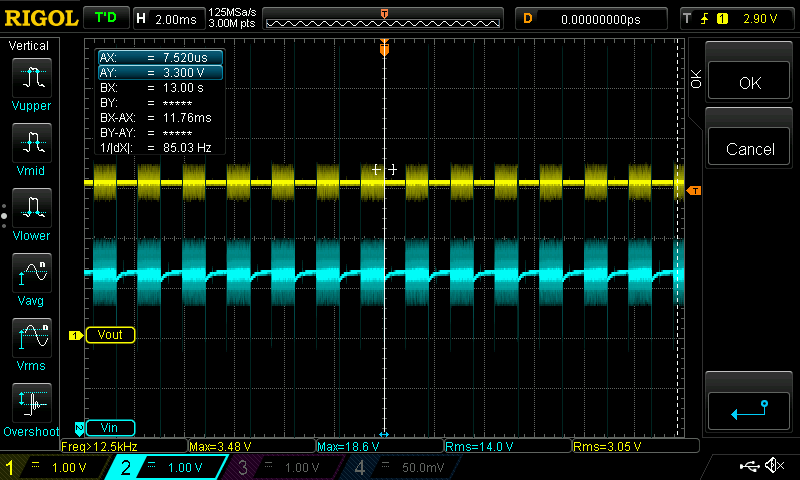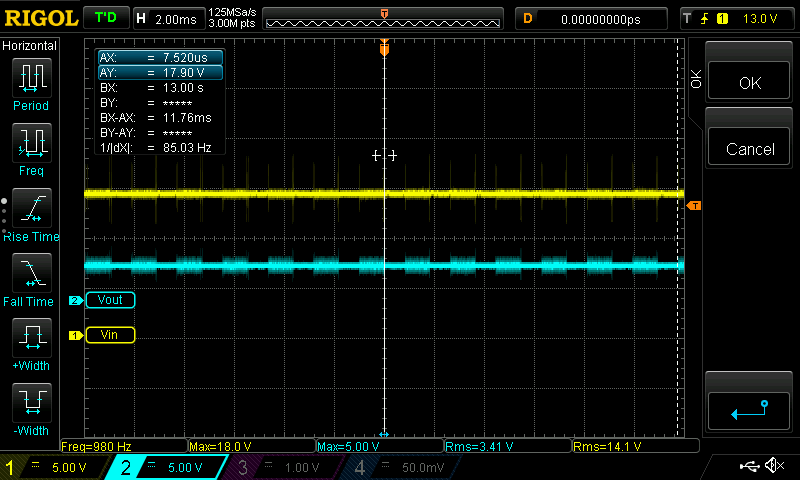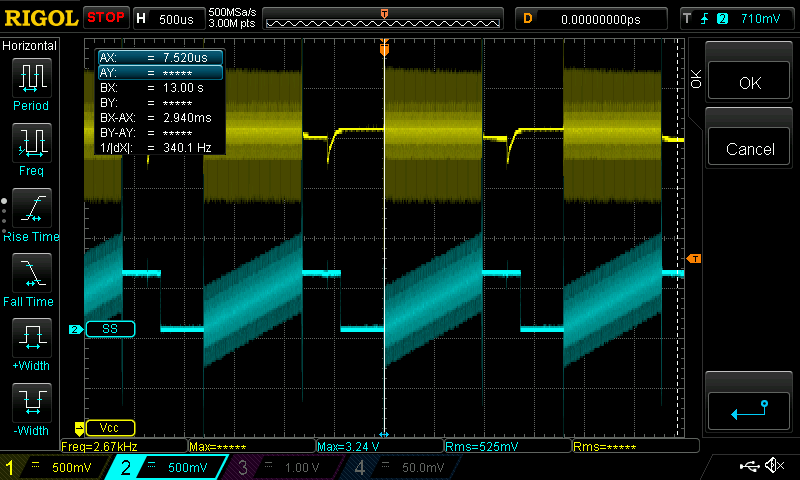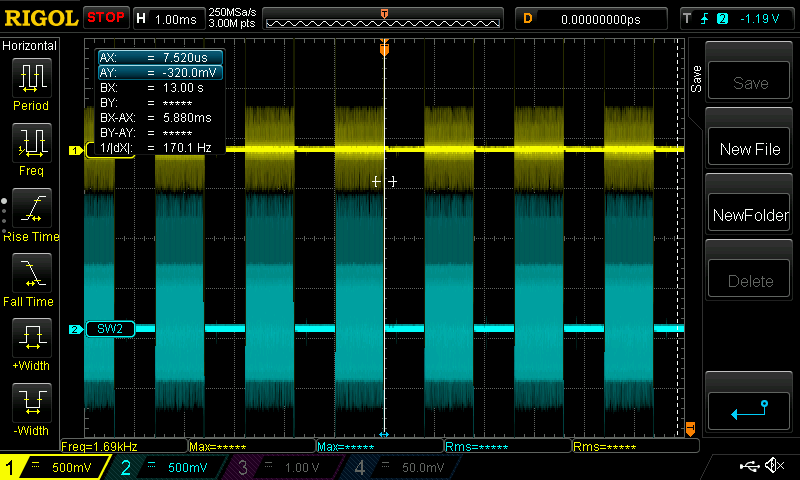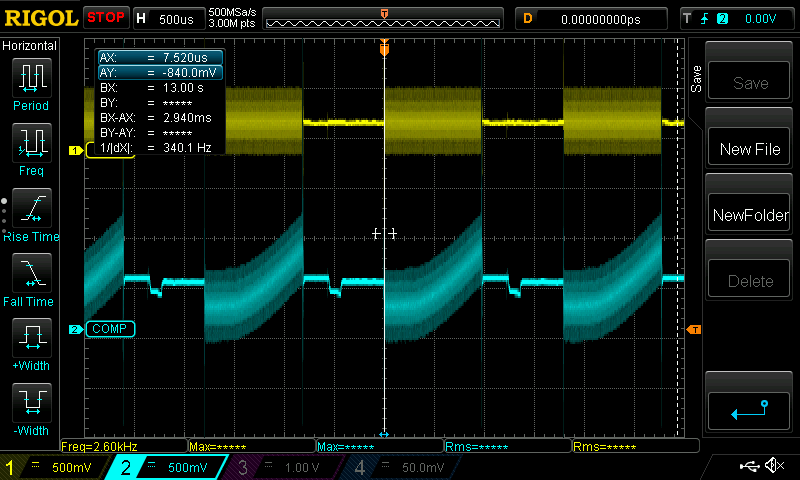Other Parts Discussed in Thread: CSD17318Q2
Tool/software:
Hello,
I have used the Webench tool and reference documentation to develop the following schematic. The design is intended to operate with an input voltage range of 10.7V to 40V and provide a regulated 12V output. The key configuration parameters are as follows:
- Mode of Operation: AutoMode
- Spread Spectrum: Disabled
- Hiccup Mode: Enabled
- uSleep: Enabled
- IMON Limiter: Disabled
- Monitoring Fault Indication Pin: Disabled
- Output Current Monitor: Disabled
However, after prototyping the circuit, the output voltage is only 2.4V. I would appreciate any insights or feedback on potential design issues that could be causing this behavior.



